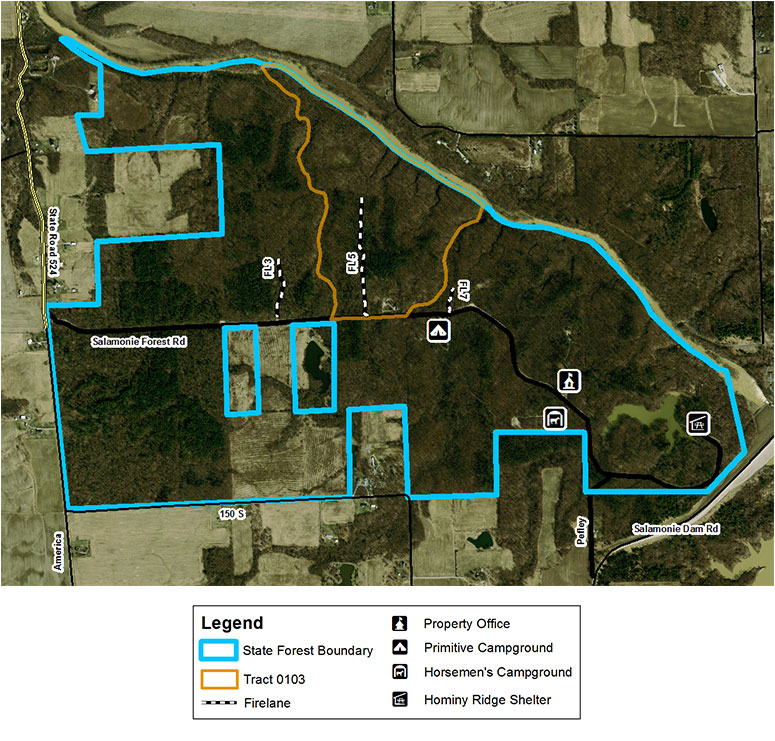
Aerial view of Salamonie River State Forest from 2013.
Forestry personnel have marked trees for management on Salamonie River State Forest in Compartment 1, Tract 3.
The goal
The goal is to remove some of the dying, over-mature, poorly formed, suppressed, and damaged trees in order to release the better-quality, healthy trees in the area. This will promote diversity in the forest and improve spacing and resource availability. This work is accomplished through individual tree selection.
Forest practice and research shows that periodic removal of selected trees assists in maintaining the overall health of the forest, including managing for endangered species, soil and water protection, sustainable timber production, and recreational activities. Learn more about forest management in Indiana State Forests.
- Salamonie River State Forest Management Plan
- Salamonie River State Forest Management Infographic
- Indiana Code About State Forest Management (IC 14-23-4-1)
What you need to know
- The long-term objective for Indiana State Forests remains to conserve these forests and, through active, science-based management, to ensure they remain healthy and productive for the benefit of current and future generations.
- Safety is paramount. The management window for this operation will occur during the recreation off-season to minimize the impact on hiking and horseback riding.
- Of the 59,500 total trees that are 11 inches in diameter and larger on the Salamonie River State Forest tract, 984 are planned to be harvested.
- This is the eighth harvest at Salamonie River State Forest since 1967.
- The planned operation will help provide conditions to allow sycamores and Kentucky coffeetrees to remain a part of Salamonie River State Forest for years to come.
More about Salamonie River State Forest
Salamonie River State Forest has been a part of the Division of Forestry since 1935. The property offers camping, hiking, horseback riding, mushroom gathering, etc., as well as hunting opportunities. Through forest management, the Division of Forestry also provides unique forest habitat for numerous wildlife species, including habitat for some federal and state threatened species.
During the 1800s to early 1900s, portions were cleared for agricultural use. These areas were planted with pine species by the CCC (Civilian Conservation Corps, Camp 589) in the late 1930s. Many of the pines are now in decline or have already died, and hardwoods have begun to move into the area.
Salamonie River State Forest is located just northwest of Salamonie Lake between Wabash and Huntington cities in northeast central Indiana. Today, the Salamonie River State Forest covers roughly 956 total acres. Roughly 87.5% of that acreage is wooded.
